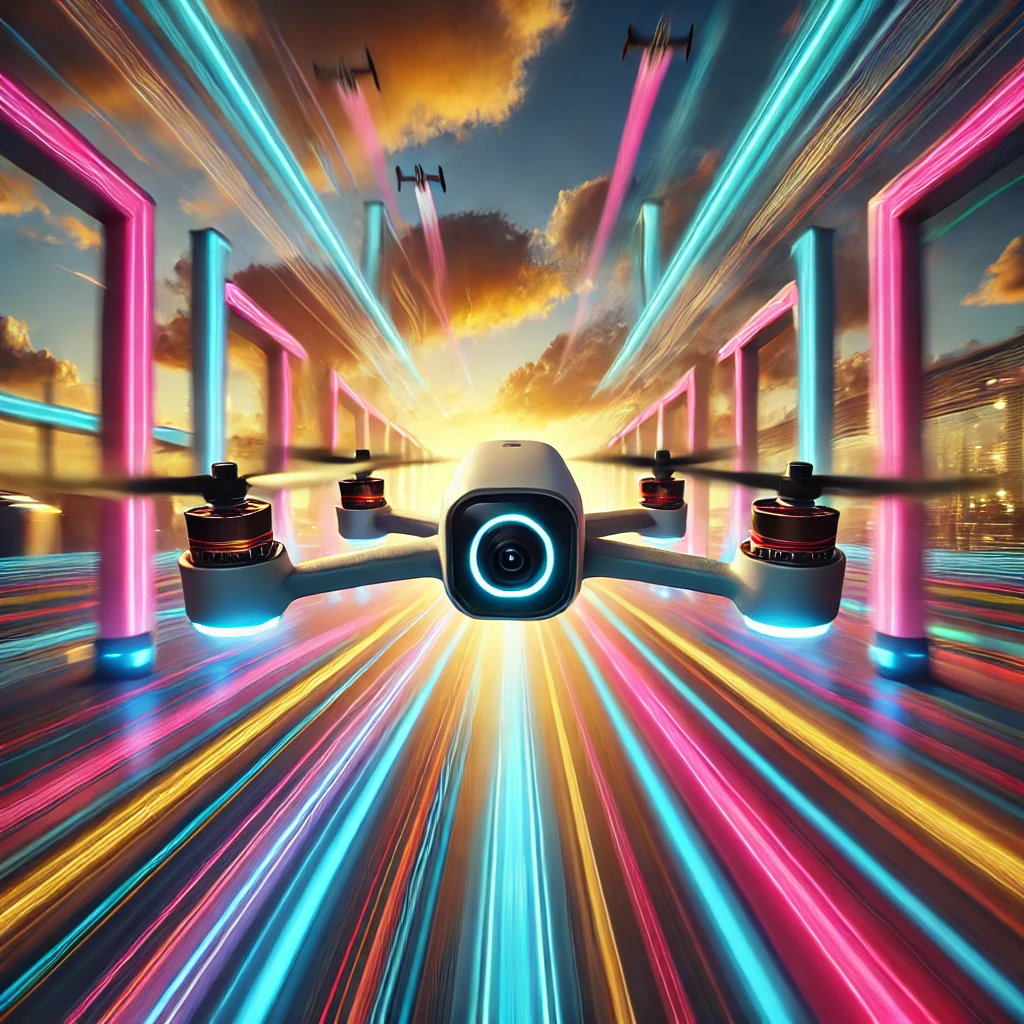Drones have become a fascinating piece of technology that is reshaping various industries and hobbies. One of the most exciting applications of drones is drone racing. This high-speed, adrenaline-pumping activity combines cutting-edge technology, precision, and skill to deliver an unparalleled flying experience. Whether you’re a beginner or an experienced pilot, this guide will take you through everything you need to know about racing drones, from the basics to advanced tips.
What Are Racing Drones?
Racing drones are specialized unmanned aerial vehicles (UAVs) designed specifically for speed, agility, and performance. Unlike traditional drones used for photography or general purposes, racing drones prioritize power and responsiveness, allowing pilots to maneuver through tight spaces and challenging courses at breakneck speeds.
Key Features of Racing Drones:
- Lightweight Frame: Made from durable materials like carbon fiber to withstand crashes.
- High-Speed Motors: Capable of propelling drones at speeds of up to 100 mph.
- First-Person View (FPV): Equipped with cameras that transmit live video to goggles or screens, giving pilots an immersive flight experience.
- Customizable Components: Easily upgraded or modified to enhance performance.
- Responsive Controls: Designed for precise handling during high-speed maneuvers.
Why Choose Drone Racing?
Drone racing offers a unique combination of thrill, skill, and technology. Here are some reasons why you should consider diving into this exciting hobby:
- Adrenaline Rush: Experience the exhilaration of flying at high speeds through challenging courses.
- Skill Development: Improve hand-eye coordination, reflexes, and technical knowledge.
- Community Engagement: Join a global community of drone enthusiasts and racers.
- Career Opportunities: Participate in professional leagues and competitions with substantial prize pools.
- Creative Expression: Build and customize your own drone to reflect your style and preferences.
Getting Started: What You Need
Before you dive into drone racing, it’s essential to gather the right equipment and understand the basics.
1. The Drone
For beginners, choosing the right racing drone is crucial. Ready-to-fly (RTF) drones are a great starting point, as they come pre-assembled and are easy to use. Popular models include:
- EMAX Tinyhawk II: A beginner-friendly drone with excellent performance.
- Hubsan H122D X4 Storm: Affordable and durable, perfect for new pilots.
- BETAFPV Meteor75: Lightweight and great for indoor practice.
2. FPV Goggles
FPV goggles are essential for immersive flying. Look for goggles with a comfortable fit, high resolution, and low latency. Recommended options:
- DJI FPV Goggles V2: High-quality visuals with a user-friendly interface.
- Fat Shark Dominator: Popular among racers for their reliability.
3. Controller (Transmitter)
A reliable controller ensures precise control over your drone. Look for ergonomic designs and customizable settings. Popular options include:
- FrSky Taranis Q X7: Affordable and feature-packed.
- Radiomaster TX16S: Known for its versatility and compatibility.
4. Batteries and Chargers
Racing drones consume a lot of power, so investing in high-quality batteries and chargers is essential. Always carry spare batteries for uninterrupted practice sessions.
5. Practice Course
Set up a practice course with obstacles to hone your flying skills. You can use gates, cones, or markers to simulate a race environment.
Learning to Fly: Tips for Beginners
Flying a racing drone requires skill and practice. Follow these steps to get started:
1. Master the Basics
Begin with simple maneuvers like hovering, forward flight, and turning. Use a simulator if possible to practice without risking damage to your drone.
2. Understand FPV Controls
Learn how to control the drone using the live feed from your FPV goggles. This perspective can take some getting used to but is essential for racing.
3. Start Slow
Don’t rush to fly at high speeds. Focus on accuracy and control before attempting complex maneuvers.
4. Learn to Build and Repair
Understanding how to build and repair drones is a valuable skill in drone racing. It allows you to customize your drone and quickly fix issues.
5. Join a Local Club
Connect with other drone enthusiasts to learn from their experiences and participate in group practice sessions.
Racing Drone Competitions
Drone racing has evolved into a global sport, with leagues and competitions attracting talented pilots from around the world. Here are some of the most prominent events:
1. Drone Racing League (DRL)
The DRL is one of the most popular professional leagues, featuring high-speed races and advanced drone technology. Pilots compete on complex courses for significant prize money.
2. MultiGP
A community-based league that organizes local and international racing events. It’s an excellent platform for beginners to gain experience.
3. FPV Racing Events
Local FPV racing events are held worldwide, offering opportunities for pilots to showcase their skills and compete against others.
Common Challenges and How to Overcome Them
1. Crashes
Crashes are inevitable in drone racing. Use durable drones and practice in open areas to minimize damage. Always carry spare parts for repairs.
2. Battery Life
Racing drones have limited battery life, often lasting only 5-10 minutes. Carry multiple batteries and invest in fast chargers to keep flying.
3. Signal Loss
Signal interference can disrupt your FPV feed. Use high-quality transmitters and receivers to ensure a stable connection.
4. Regulatory Compliance
Understand local drone laws and regulations to avoid fines or legal issues. Always fly in designated areas and respect privacy.
Advanced Tips for Aspiring Racers
Once you’ve mastered the basics, consider these advanced techniques to take your skills to the next level:
- Learn Acro Mode: This mode gives you full control over the drone, allowing for advanced maneuvers like flips and rolls.
- Upgrade Your Drone: Invest in better motors, cameras, and propellers to enhance performance.
- Analyze Your Flights: Use flight data and recordings to identify areas for improvement.
- Compete Regularly: Participate in local races to gain experience and build confidence.
The Future of Drone Racing
Drone racing is rapidly growing in popularity, with advancements in technology making it more accessible and exciting. Innovations like AI-powered drones, enhanced FPV systems, and more durable materials are shaping the future of the sport. Additionally, virtual reality integration and live-streamed races are attracting a broader audience, ensuring that drone racing continues to thrive.
Conclusion
Drone racing is an electrifying hobby that combines speed, technology, and skill. Whether you’re a casual enthusiast or an aspiring professional, the thrill of controlling a high-speed racing drone through intricate courses is unmatched. By investing in the right equipment, practicing consistently, and connecting with the drone racing community, you can embark on an exciting journey into the world of high-speed flying.
So, gear up, take to the skies, and experience the adrenaline rush of drone racing today!

